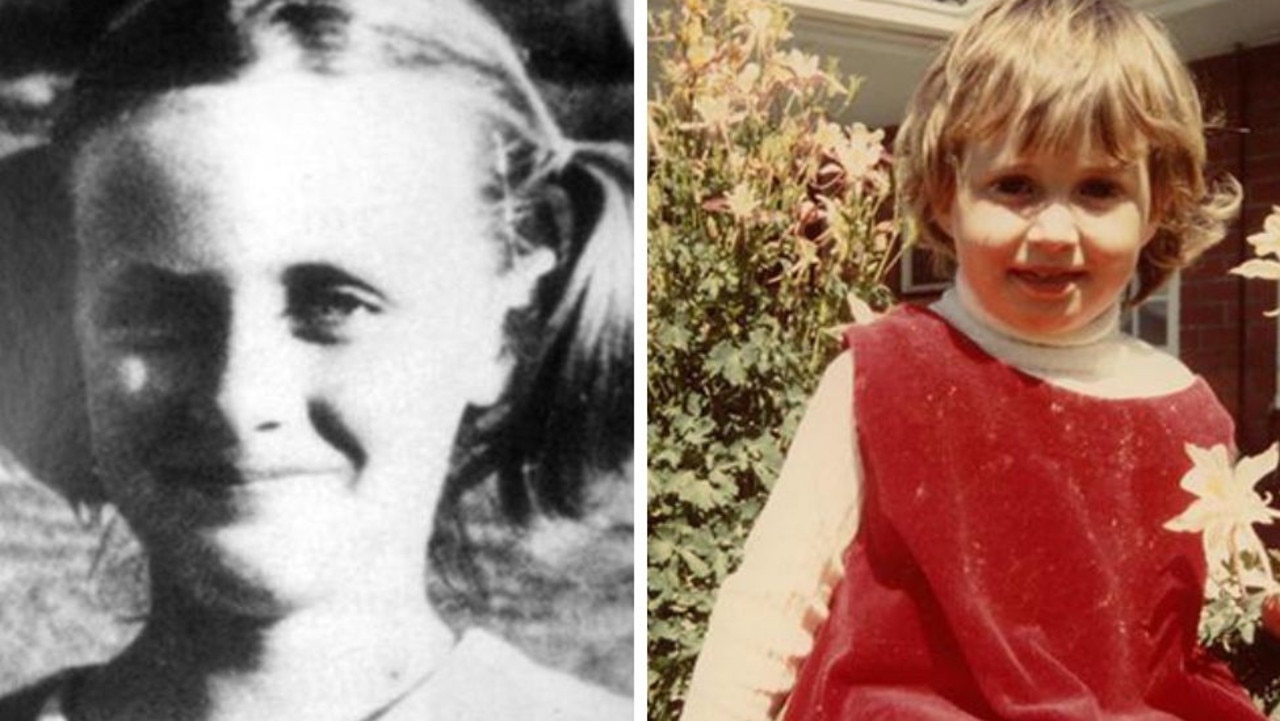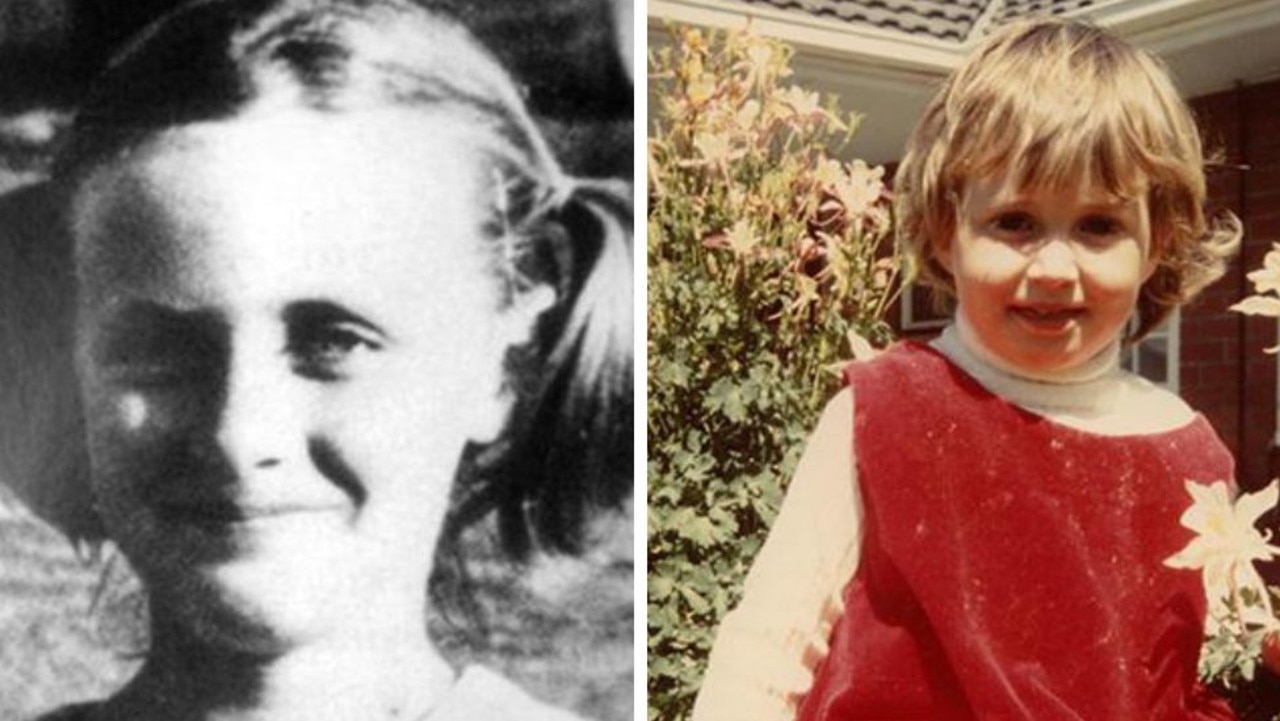Jane Thurgood-Dove’s brutal unsolved murder likely a case of mistaken identity
JANE Thurgood-Dove was a suburban mother gunned down in her driveway in front of her three children. Her brutal murder remains unsolved, but police and others linked to the case believe she could have been killed in a fatal case of mistaken identity. LISTEN NOW.
Cold Cases
Don't miss out on the headlines from Cold Cases. Followed categories will be added to My News.
IF there’s a chance the crooked lawyer who calls himself Philip Peters did not organise the hitmen who murdered Jane Thurgood-Dove by mistake, he certainly acts as if he did.
No one has been charged but one thing is clear: the man police still believe was behind the evil act is as hard to trace as he can make it.
He lives in exile, skulking around the backblocks like a fox dodging a farmer’s bullet.
Go looking for him and you find a weather-beaten house in a dried-up town called Watchem, in the no-man’s land between the Wimmera and the Mallee.
Inside the silent house is a telephone still registered in his name but if you call it, no one answers.
It’s perfect fugitive territory. Land is cheap, empty houses worth next to nothing.
This is the lonely country where Peters once plotted to bring an enemy — someone who’d crossed him in a scam gone wrong — to be tortured to death in a farmhouse cellar.
Luckily for the target, the butcher that Peters recruited to do his dirty work couldn’t stomach it and told police, which is why Peters went to jail.
RELATED CONTENT:
THE NIGHT A SPORTS STAR SAW CARL WILLIAMS WITH A BODY IN AN ESKY
KING ST SHOOTING: THE FOOTY STAR, STRIPPERS AND THE DEADLY BIKIE
FINAL MOMENTS OF MELBOURNE’S BLACK PRINCE ALPHONSE GANGITANO
This is where police believe he planned a terrible revenge that ended in Jane Thurgood-Dove’s murder via mistaken identity.
He’s not even really named “Peters”.
He was born Peter Philip Raftopoulos in Melbourne in 1945 but changed his name after disgracing the family one, though he still uses his original surname on some legal documents when it suits him.
This is the man one detective describes as a sinister version of fictional lawyer Dennis Denuto from The Castle and vicious, greedy and depraved but not brave.
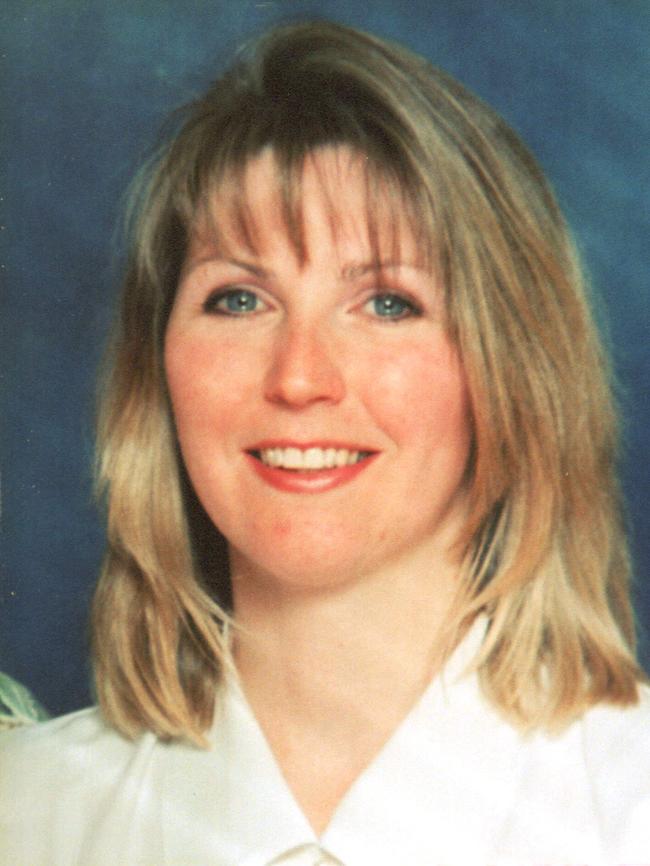

A GUNNED DOWN IN FRONT OF HER CHILDREN
It happened on Oaks Day, 1997. If Jane Thurgood-Dove had gone to the races that day, she would probably still be alive, a wife and mother entering middle age and looking forward to grandchildren.
At Flemington, it was “Ladies Day” but it was just another Thursday for the suburban mother of three a few kilometres away in Muriel St, Niddrie.
While her husband, Mark, went to work in Campbellfield, Jane did the school run, housework and other chores that go with raising young children.
Everything was normal, right up until a stupid, pot-bellied gunman shot her.
Jane had pulled her Toyota four-wheel-drive into the drive of the family home about 4pm after picking up her two older sons from school, her three-year-old daughter in the car with her.
A blue Commodore sedan swiftly drove in behind her, blocking any escape.
A man wearing a beanie and sunglasses jumped from the passenger seat and chased her, firing two shots from a heavy-calibre pistol.
The terrified children saw their mother scream, then fall.
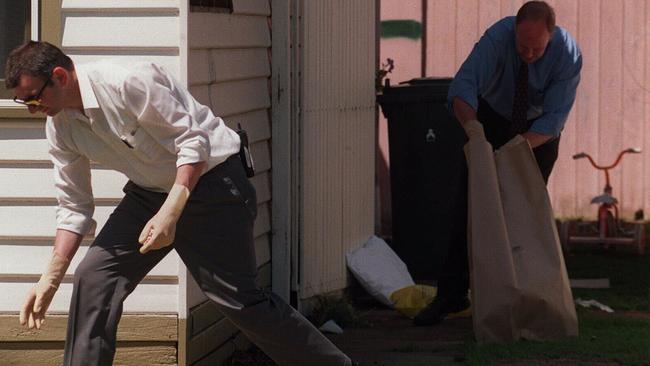

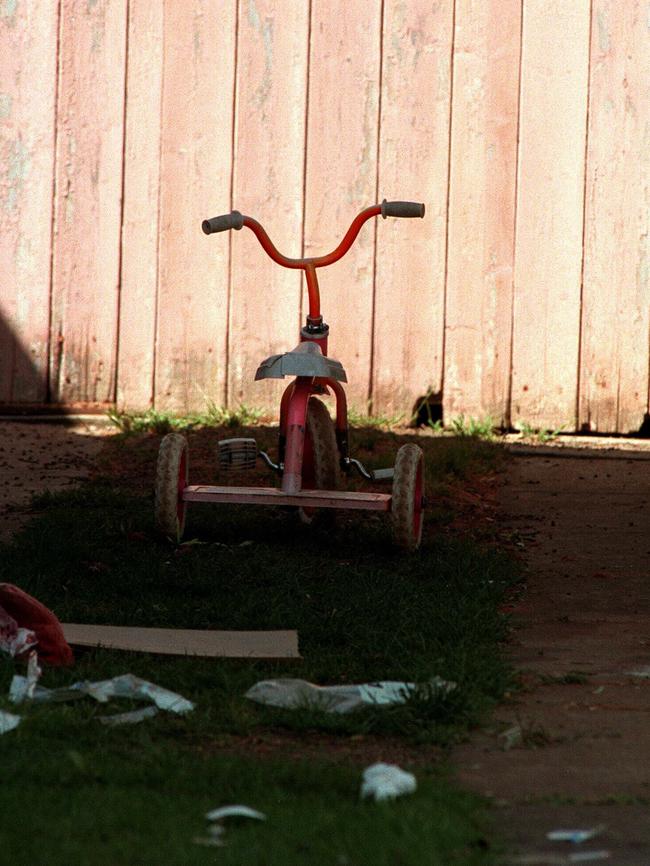
The gunman was wearing shorts and a T-shirt and had a beer gut and “messy” grey and brown hair. The stolen Commodore was found burnt out in a nearby street a few minutes later.
The homicide detectives’ first task was to rule out the dead woman’s husband as a suspect. Most murders are committed — or commissioned — by someone close to the victim.
So after the devastated husband told his children their mother was dead, he faced tough questions that had to be asked.
But even in those first frantic hours, a homicide senior sergeant wondered if Jane was a victim of mistaken identity.
His name was Ron Iddles, and he is still torn by what happened in one of the few (officially) unsolved cases of his career.
As days turned into weeks, Iddles’ murdered-by-mistake theory was overshadowed as another suspect emerged — a young policeman who had been obsessed with Jane Thurgood-Dove and wrongly blamed himself for her death.
So much so that he failed a lie-detector test.
Meanwhile, the trail leading to the real killers grew cold.


MURDER HIT LIKELY A PLAN COOKED UP IN PRISON
Trinity Grammar and Melbourne University’s Law School have produced some of Australia’s most distinguished citizens. Philip Raftopoulos was not one of them.
The man that drug dealers later dubbed “Mr Laundry” because he allegedly specialised in washing dirty money, did not stand out at school.
One 1960s teacher recalls him as a troublesome pupil who talked too much and got into trouble. A fellow student from that era recalls that then Philip Raftopoulos’s family were hardworking migrants who owned two landmark city restaurants.
Apart from that, he didn’t leave much of an impression.
He was still known as Raftopoulos when he went to Melbourne University — and when he eventually graduated with a law degree in 1972. In its 160 years, the Law School has produced four prime ministers (including Robert Menzies), four Chief Justices and two governors-general.
But Raftopoulos went the other way.
MORE COLD CASES:
DID EASEY ST KILLER HAVE FRIENDS IN HIGH PLACES?
DEATH ON A DAIRY FARM: THE ANSWERS KAYE KING’S KIDS NEVER GOT
FRANKSTON ARREST COULD BE KEY TO DISAPPEARANCE OF LITTLE CHERYL
After working for the Crown Solicitor’s Office and State Treasury, he switched to private practice in Essendon, allegedly using inside knowledge from prosecuting cases to set up property scams and launder proceeds of crime.
Unknown to his secretary, he allegedly used her name to forge fraudulent documents which would lead to her receiving death threats from those who Peters cheated out of money.
He stole the identity of Michael Smith, a New Zealand-born oil rig worker who died in Victoria — setting up bank accounts, car registration and driver’s licence in Smith’s name.
He used Smith’s name to work for a St Kilda solicitor.
In 1989, the Law Institute of Victoria chased Peters because money was missing from his trust account — allegedly siphoned to companies run by drug dealers.
Witnesses told police of criminals coming to Peters’ office with bags of cash.
Interest rates were high; there were always borrowers willing to pay off cash loans at a discount.
But Peters, the slimy middleman, was dancing with wolves.
An amphetamines dealer took out a $30,000 contract on his life over a half-million-dollar dispute.
Unfortunately, the contract didn’t halt Peters’ crime career even after the dealer had thugs beat up an elderly member of his family.
After that warning, Peters dyed his hair and carried a gun.
Again, he dodged a bullet after helping a huge sum of dirty money vanish.
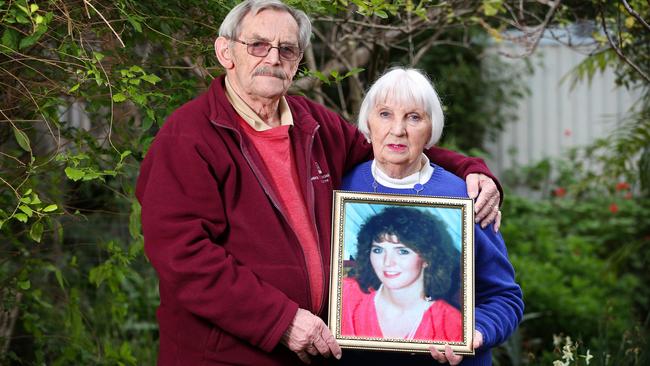

Unbelievably, the drug dealer who had supplied the money managed to claw it back as compensation from the Solicitors Guarantee Fund.
This probably saved Peters’ life — and so, therefore, it may have cost Jane Thurgood-Dove hers.
April 1994. It’s midnight in a St Kilda back lane.
A hooded figure, trussed up with electrical tape, lies deathly still in a parked van.
Peters has planned this and he’s gloating.
As far as Peters knows, the bound figure is a convicted criminal named Peter Ioannis Kypri (alias Kyprianou) who he blames for losing $200,000 in an insurance fraud gone wrong. Peters has spent months planning to abduct Kypri and for him to be taken to a property near St Arnaud to be hacked to pieces.
The conversation Peters has with his hired “killer” in the next few minutes is probably the happiest he will be for the next 23 years. He’s relishing the idea of Kypri being killed.
The police also relish it: for three months they have played along with a chilling charade that’s deadly real to Peters — taping every telephone call and conversation.
The “body” in the van is a dummy borrowed from Channel 7. The conversation with Peters’ accomplice (who had turned informer) is recorded.
So is Peters trying to fabricate an alibi, after the police stage a raid to save the “abducted man” following a supposed tip-off from a nearby householder.
The police work the act to the limit, busily trying to revive the “body”.
Peters faces 13 charges including conspiracy to murder. He is sentenced to 3½ years for attempted abduction, perjury and cultivating marijuana after doing a plea deal that gets the murder conspiracy charges dropped.
But during his time inside (police later discover), he meets an old crook with Geelong bikie contacts. He now believes he has two reasons for revenge against Kypri. Police believe he approaches the bikies to do it when he is released six months before the Thurgood-Dove murder.
The Kypris happen to live on the same side of Muriel St as the Thurgood-Doves.
Carmel Kypri and Jane Thurgood-Dove are the only blonde young mothers in the street.
Each drives a four-wheel-drive, has young children and lives three houses from the corner.
But whereas the Thurgood-Doves have no reason to be afraid of anyone, the Kypris are noticeably cautious.
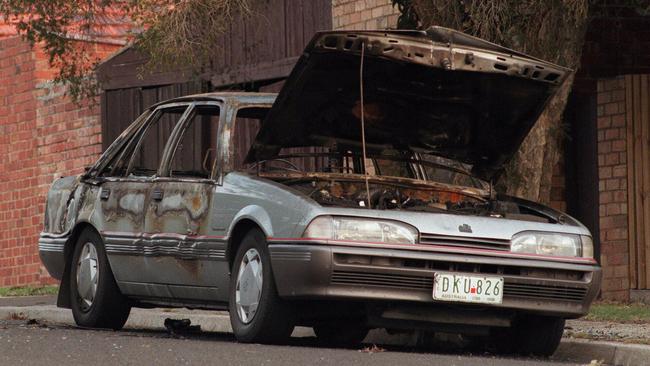


Peter Kypri reverses his car into the drive, ready for a fast getaway. He rehearses a distinctive whistle to warn his wife and children if he sees anything suspicious. And they take their children to a relative after school.
Two weeks after the murder, while detectives were concentrating on the young policeman who had made himself a suspect, this reporter knocked on the Kypris’ door.
Carmel, hair bleached blonde, admitted she might have been the intended target.
“If it wasn’t meant for her, it makes you wonder,” she said of her neighbour.
“It has made us wary. My husband says to watch out when we come into the drive, to look around the place. I keep the door locked.
“Maybe it was for us.”
The informer who had helped police nail Peters had no doubt that Carmel Kypri was the intended target as a devious way to get revenge on her husband.
Iddles and his detectives started thinking he was right.
The Kypris moved from Muriel St soon after. They had little doubt they were the real target.
By the time investigators exonerated the young policeman, the investigation was stalled. It stayed that way until November 2003, when the state government announced a $1 million reward.
Within half an hour, police got a tip-off: the shooter looked a lot like a former Rebels bikie, Steven John Mordy.
For 18 months after the murder, Mordy hardly left his house in Geelong. He had died of a drug overdose in 2001.
Mordy’s family have since complained about his name being linked with the murder but he was a violent man who had already been charged with murder in 1996.
Police suspected that Mordy’s mate, Jamie Reynolds, had waited near where the Commodore was torched then drove the other two away.
Reynolds was never questioned because he, too, died suddenly — in a boat accident off Barwon Heads in 2004.
A witness told police that, days after the murder, Reynolds had drunkenly confessed: “We got the wrong sheila.”
But who was the “wheel man” who drove the Commodore in Muriel St? The hot favourite in a small field is a bikie enforcer who lives just east of Geelong.
Like Philip Peters, the enforcer has form, but he does his own dirty work.
The $1 million reward to solve Jane Thurgood-Dove’s murder is still there to be claimed. So far, the two people who know most about it aren’t talking.
But as they get older, someone might.
READ MORE:
CARL WILLIAMS: A DEAL SOAKED IN BLOOD AND THE HOUSE THAT DRUGS BOUGHT
NOTORIOUS PAEDOPHILE THE PRIME SUSPECT IN LITTL JOHN LANDOS CASE


